All the best places where solo travelers can take their time to enjoy Shimosuwa
From walking around Lake Suwa to visiting the area’s shrines and temples, there are all sorts of ways for solo travelers to enjoy the culture and history Shimosuwa has to offer. Located just 2.5 hours away from Tokyo via train, Shimosuwa is a perfect destination for both daytrips and overnight stays.
Visitors will be able to interact with and truly appreciate the history, culture, food, and people of Shimosuwa at these locations.
Shimosuwa Station Tourist Information Center
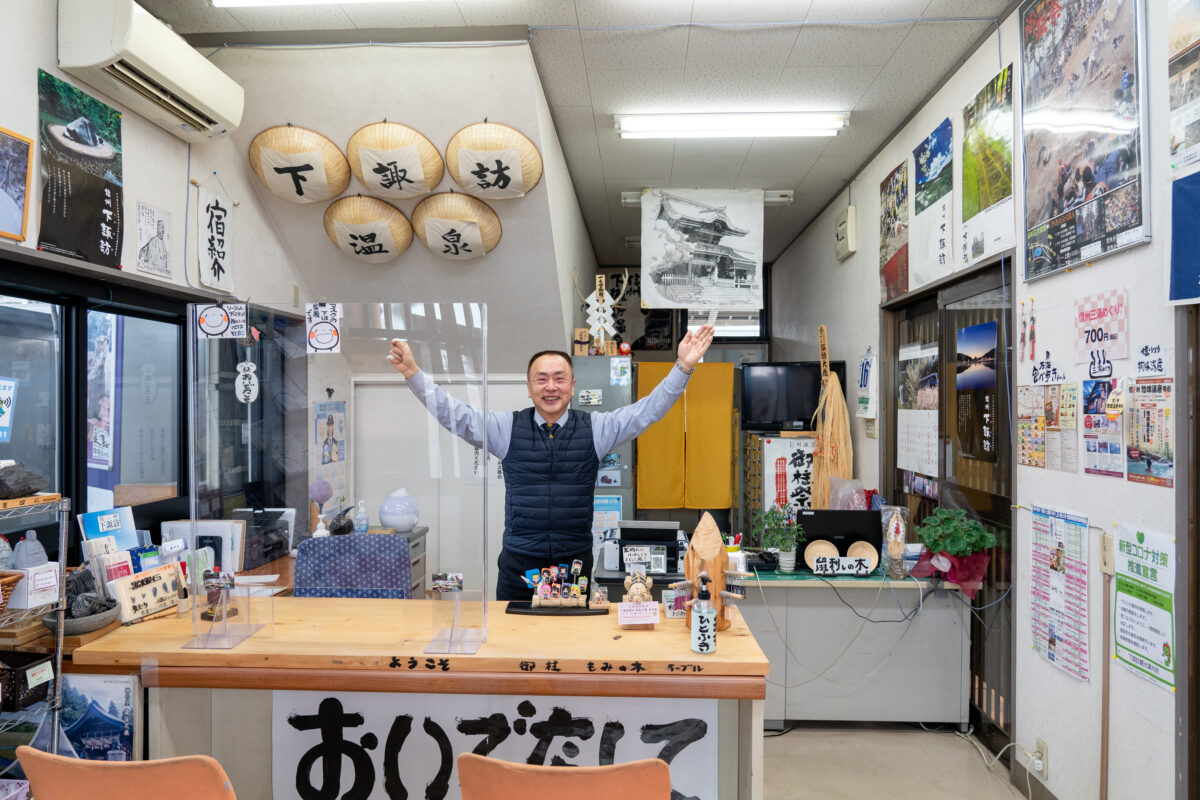
Upon arriving in Shimosuwa, the first place guests should check out is the tourist information center next to the Shimosuwa Station. All sorts of pamphlets about the Suwa region are available here. Naoto Komatsu (68), the director of the center who is affectionately called “Mr. Onbashira” (named after a famous festival in the region), will tell guests about the area’s sightseeing spots. You can catch him almost every day of the week except Wednesdays.
Mr. Komatsu also serves as an advisor to the Shimosuwa Kiyari* Preservation Society. Just tell him where you want to go and what you’re interested in, and he’ll be sure to share the sights and spots that match your individual travel style.
* Kiyari: A traditional chant sung by workmen in the area when pulling a heavy load.
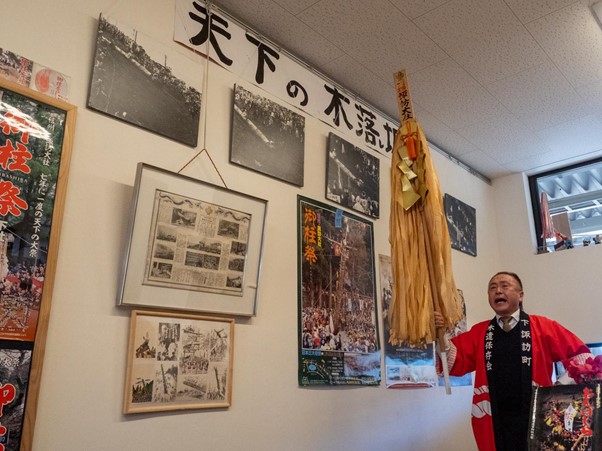
We would also love for visitors to experience Mr. Komatsu’s kiyari firsthand. He will gladly demonstrate his excellent skills for any who ask. Receiving a personal performance and listen to his delicate yet powerful chanting. Make sure to speak to Mr. Komatsu when you come to Shimosuwa!
He often asks visitors to energetically chant the kiyari together. It was an excellent experience, and one that visitors will not soon forget!
Suwa Taisha Shimosha Akimiya
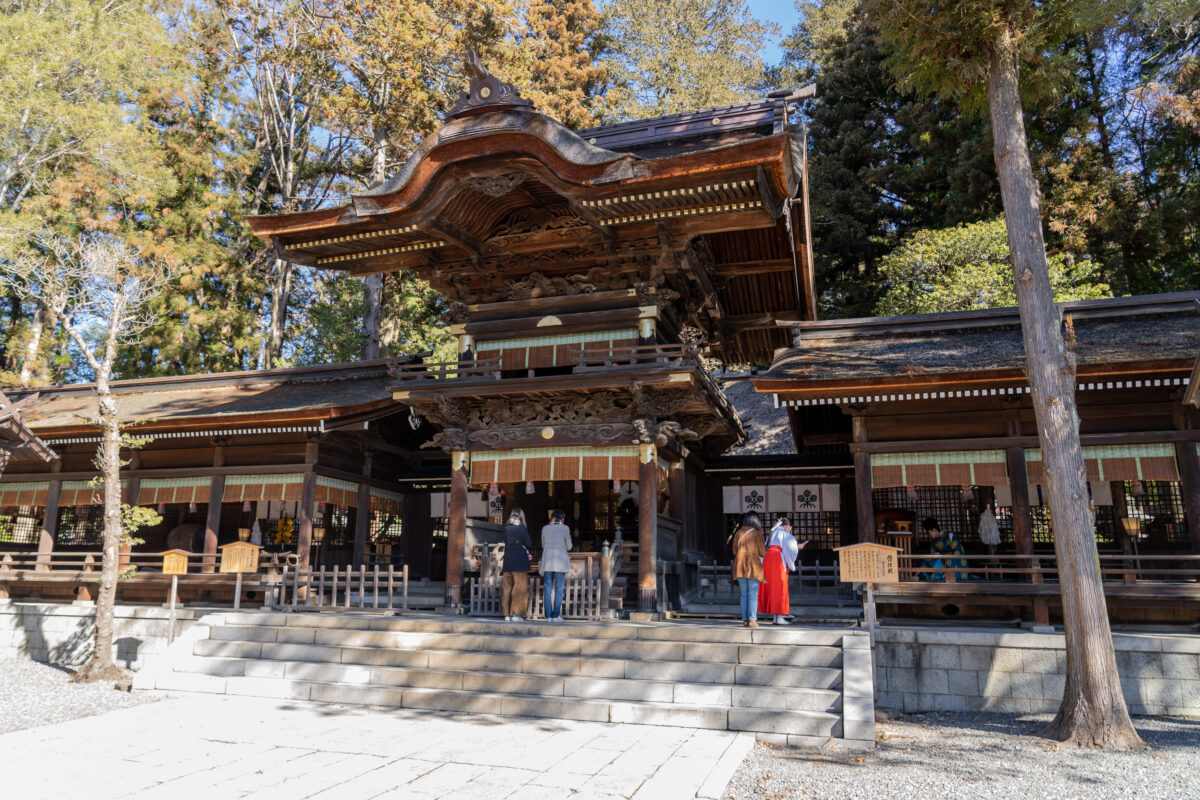
Suwa Taisha is a must when visiting Shimosuwa solo. Suwa Taisha serves as the main complex of the Suwa Shrine System that is composed of around 10,000 shrines throughout all of Japan. Akimiya Shrine sits at the intersection of the Nakasendo and Koshu Kaido Highways, and many travelers and high-ranking officials used to visit and pay their respects to these shrines long ago.
Some of Akimiya’s highlights are its kaguraden, a structure that is gabled on three sides and ornamented with a massive shimenawa (a holy rope of sorts), the nearly 800-year-old Neiri no Sugi cedar tree, Japan’s largest bronze guardian dog statue komainu, and more! Many of these features have been designated as important cultural properties.
Suwa Taisha Shimosha Harumiya
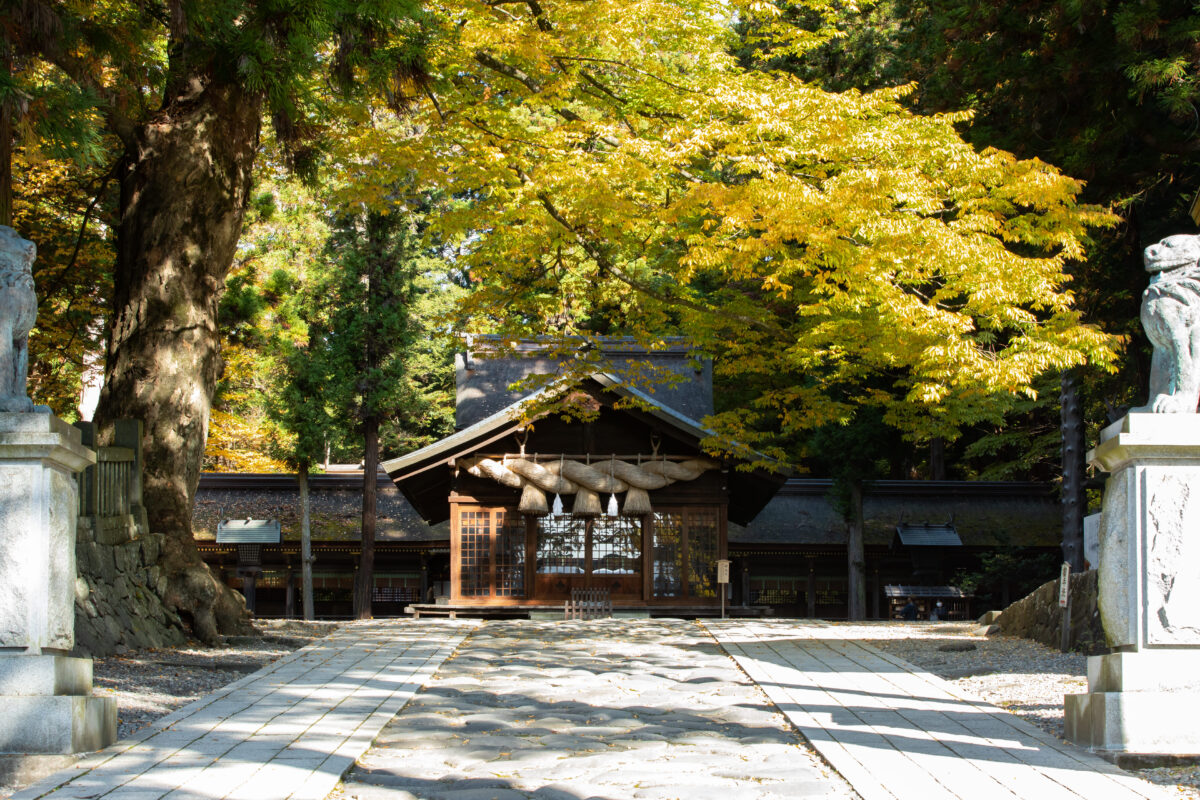
Harumiya Shrine is located a 20-minute walk away from Akimiya Shrine. The kaguraden and haiden (halls of worship), as well as the left and right katahaidens and the gohoden (a treasure hall) are laid out in the same manner as Akimiya’s. This is because the local shrine architects Osumi school who made Harumiya engaged in a competition of architectural skill with the Tatekawa school who studied Edo (modern day Tokyo) shrine architects and made Akimiya. Both groups of architects used the same design and blueprints to erect these gorgeous shrines and one of the perks of traveling solo is the ability to truly take in and enjoy the beauty of the architecture and the diligence of the architects in detail. See if you can spot the slight differences between the two.
Visitors who arrive at Harumiya Shrine should also head over to Geba-bashi Bridge, a wooden arch bridge. This bridge is somewhat oddly located in the middle of the main road leading up to Harumiya Shrine and is said to have been built in the Muromachi Period (1336-1573). It is also considered the oldest building in all of Suwa Taisha. People aren’t typically allowed to cross this bridge, but such restrictions are lifted during a festival for carrying the gods between Harumiya and Akimiya.
Manji no Sekibutsu (the Stone Buddha)
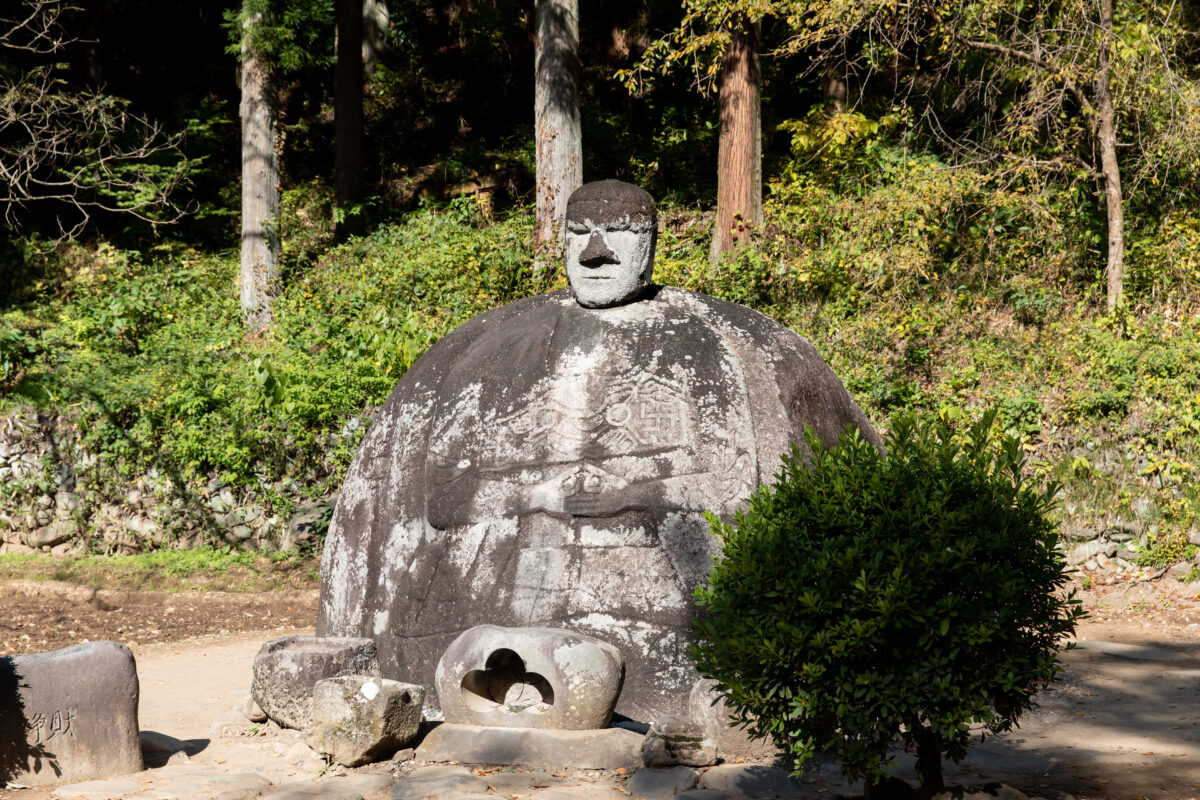
Manji no Sekibutsu (the stone buddah)’s rise to nationwide fame is owed to the painter Taro Okamoto and the writer Jiro Nitta, both of whom visited this statue while staying in Shimosuwa for the 1974 Onbashira Festival. Since parking isn’t available nearby, we recommend walking from Harumiya Shrine to Ukishima Island and then onto Manji no Sekibutsu.
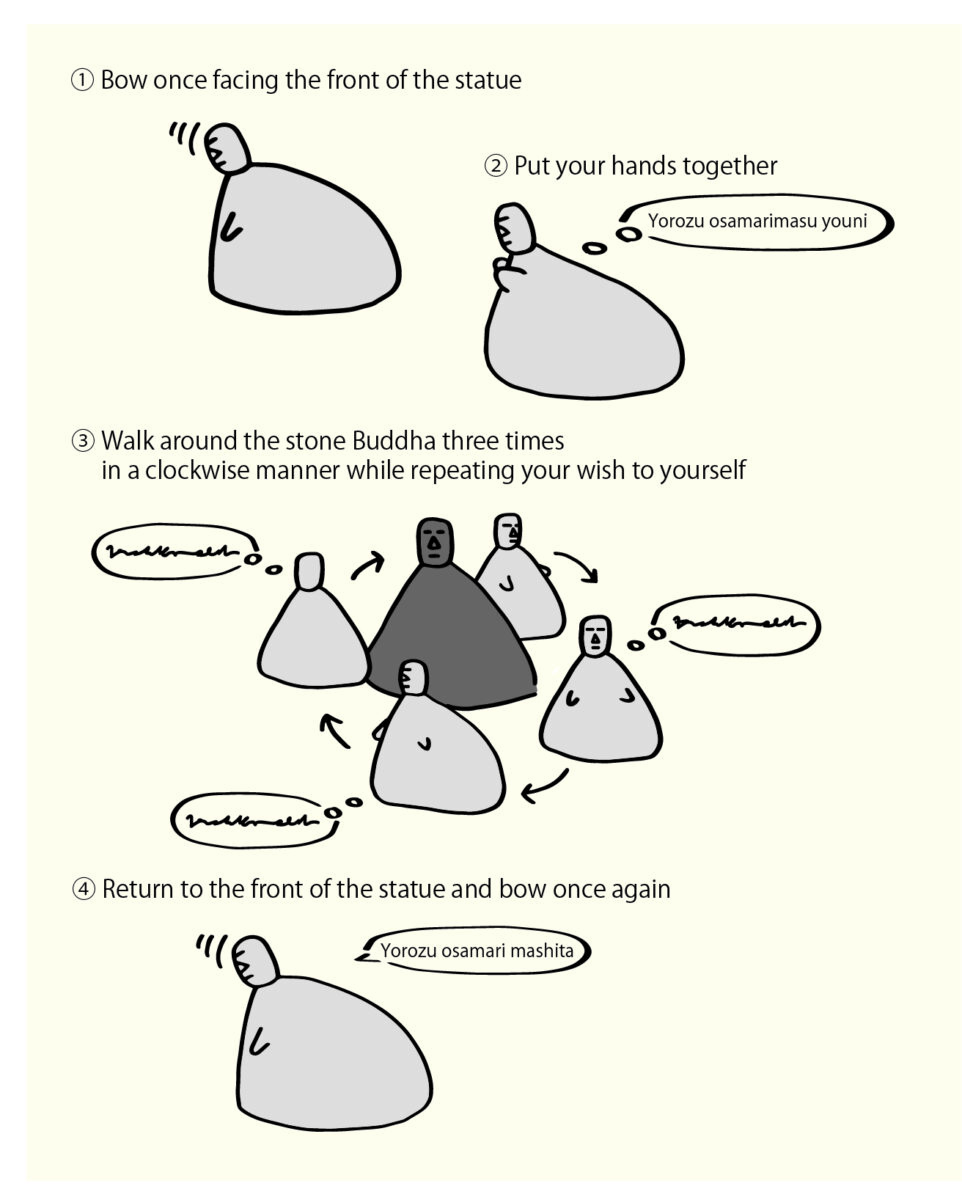 (C) Shimosuwa Tourism Promotion Association
(C) Shimosuwa Tourism Promotion Association
Here we’ll explain the proper way to pray at Manji no Sekibutsu.
1: From the front of the statue, bow once before putting your hands together
2: Walk around Manji no Sekibutsu three times in a clockwise manner while repeating whatever you wish for to yourself
3: Return to the front of the statue and bow once again
By chanting your wishes as you make your way around the stone statue, you will be able to see it in its entirety. An engraving that marks the dedication of the sculpture as well as the year of its creation can be found on the side of its body. This inscription, which was dated to the third year of Manji (1660 AD), is the origin of the statue’s name. Take a moment for yourself to commune with this ancient relic.
Onbashira Museum Yoisa
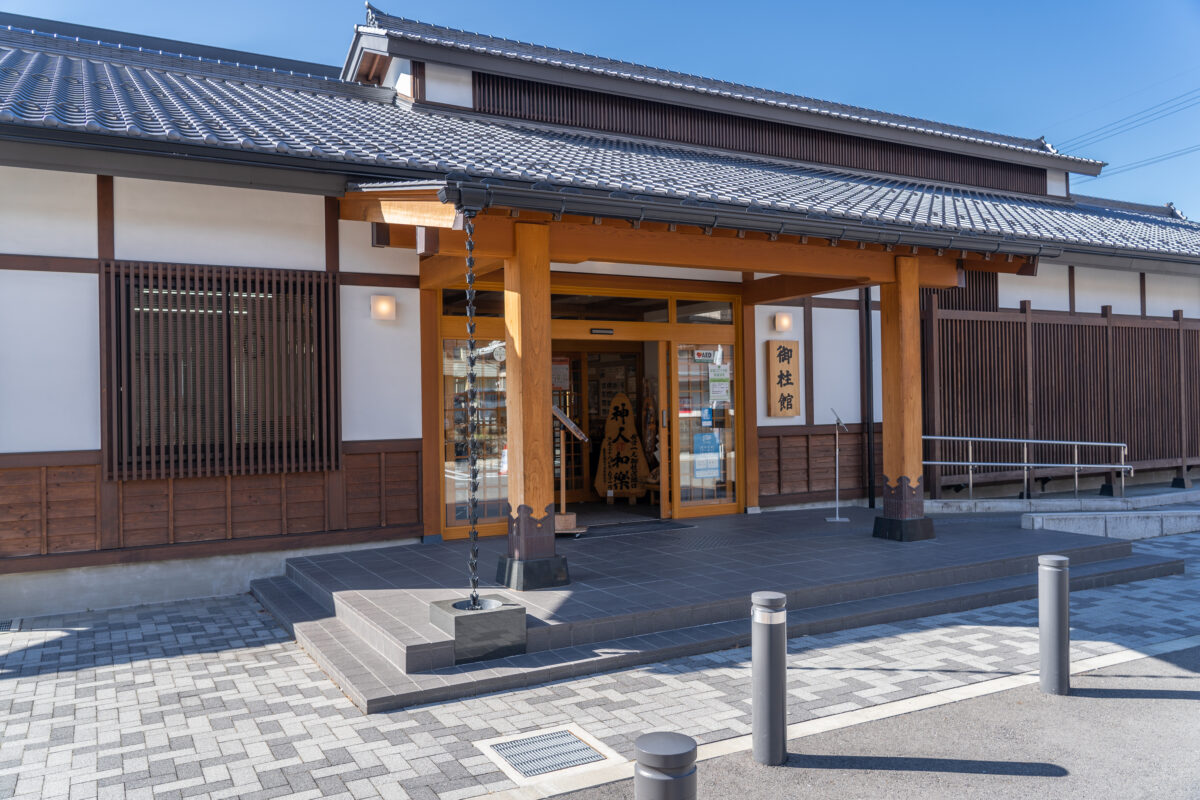
Onbashira Museum Yoisa opened in 2016 and is just a 2-minute walk away from Harumiya Shrine. At this facility, guests can learn all about the history and culture surrounding the Onbashira Festival from a guide who was deeply involved with the festival for many years. This sort of information can’t be found in books or videos, so it’s definitely worth the visit!
Tools and costumes used for a variety of events within the Onbashira Festival, such as horse-riding processions and Shinto-based rituals, are on display at Onbashira Museum Yoisa. One highlight is the Kiotoshi experience. Kiotoshi literally means “tree dropping” and is an essential part of Onbashira. Trees in the local mountains are cut down and then ridden down hills, and this video-based experience will allow visitors to see and feel firsthand what it’s like to ride down the hill on one of these logs. The staff are willing to take pictures of you, so be sure to ask them to take a commemorative shot of your trip.
Café Tac
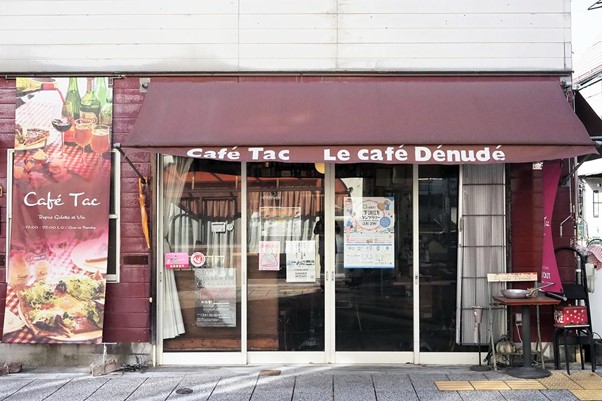
Café Tac with its wine-red exterior is run by an owner with extensive knowledge of France. The galette served here is its specialty, which has earned it many fans among the locals. Whether enjoying a galette for lunch, coffee and sweets for tea time, or some authentic French cooking alongside cider and other delicious alcohol selections for dinner, Café Tac can satisfy all of your cravings.

Café Tac's original galette gets its crispy and chewy texture from mixing cider with the crust and letting it lie down for a few days before baking it on a special iron plate. The generous serving size makes it perfect for those who wish to share with friends, or for the solo traveller who wants to eat their fill.
The friendly owner is happy to chat with any customer and give suggestions for your travel plans.
Lake Suwa

Lake Suwa is the largest lake in Nagano. It spans 16 km in circumference and sits at an altitude of 759 meters above sea level. It is encircled by a path for jogging and biking which lets visitors experience the lake’s charm at a slower pace than just driving around it.
Mt. Fuji, which sits nearly 91 km away from Shimosuwa, can be seen from the lakeside on clear days. This view is so famous it was recreated long ago in Shinshu Suwako which appears in Hokusai Katsushika’s (one of Japan’s most famous woodblock artists) woodblock print collection Fugaku Sanjurokkei (36 Views of Mt. Fuji.) Lake Suwa is a tectonic lake, and such views of Mt. Fuji are only possible due to the uplift of the Chubusangaku Mountain Range and the fault movements of the Fossa Magna (Itoigawa-Shizuoka Tectonic Line) that caused tearing in the earth’s crust to create space for the view.
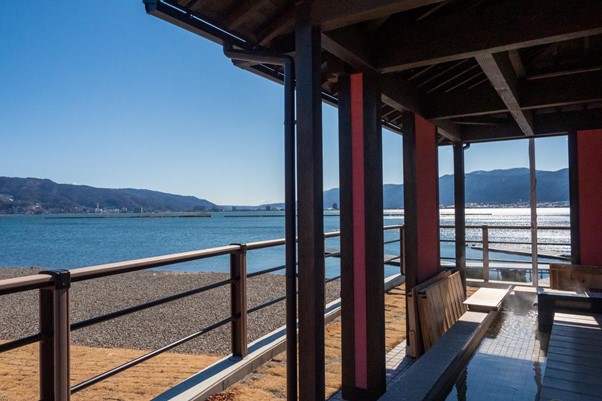
A footbath is located at Shimosuwa Rowing Park AQUA Mirai which is situated on the shores of Lake Suwa. It’s the perfect place to dip your feet in for a relaxing soak while taking in the gorgeous views of Lake Suwa.
Dokuzawa Hot Springs Kami no Yu
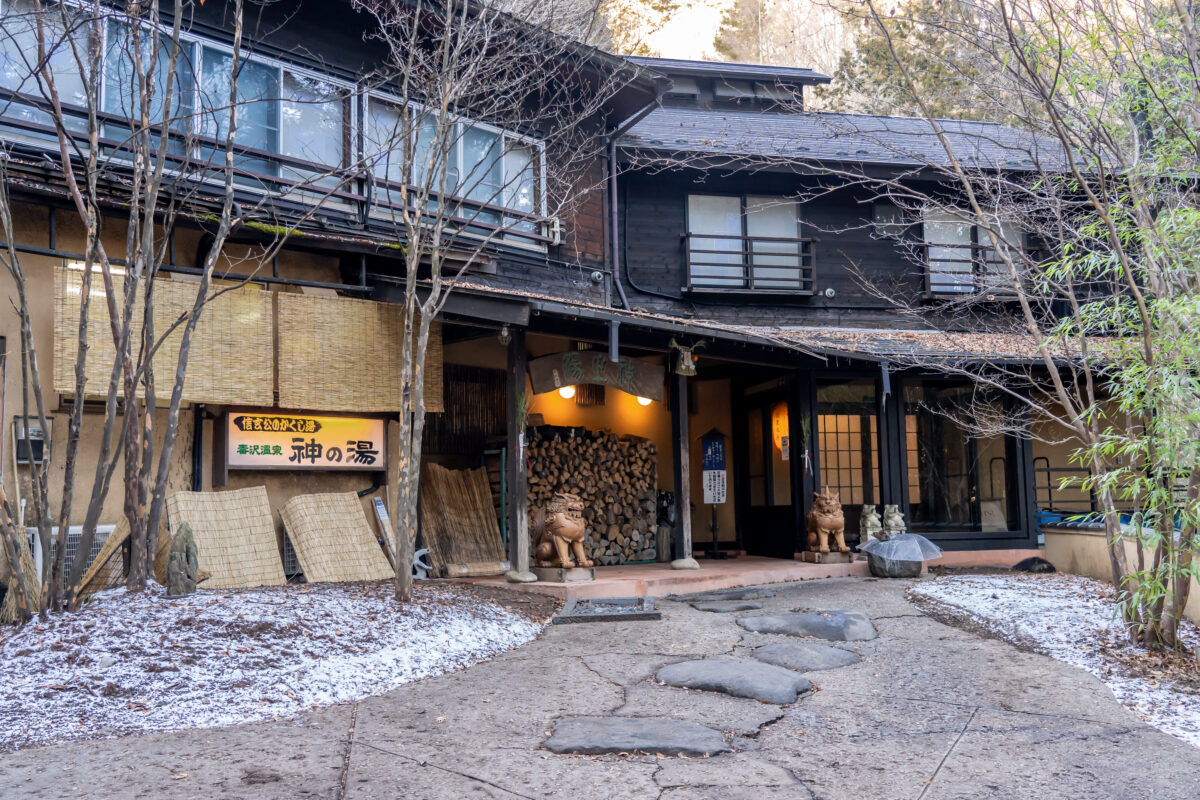
Surrounded by nature, Kami no Yu has long been known as a secret hot spring for Shingen Takeda, a famous warlord of the Sengoku Period (1467-1615). The tale goes that after discovering the hotspring, he kept it as a private onsen just for himself and his army. The name ‘Dokusawa’ literally means poisoned mountain runoff. It’s said he intentionally gave the hot spring such a name to keep other people away. The ancestor four generations prior to the current owner began using the source of the hot spring here in 1934 after the gods supposedly called upon him to do so. The water here is safe to drink and is said to have beneficial effects for gastrointestinal health and restoring iron levels.
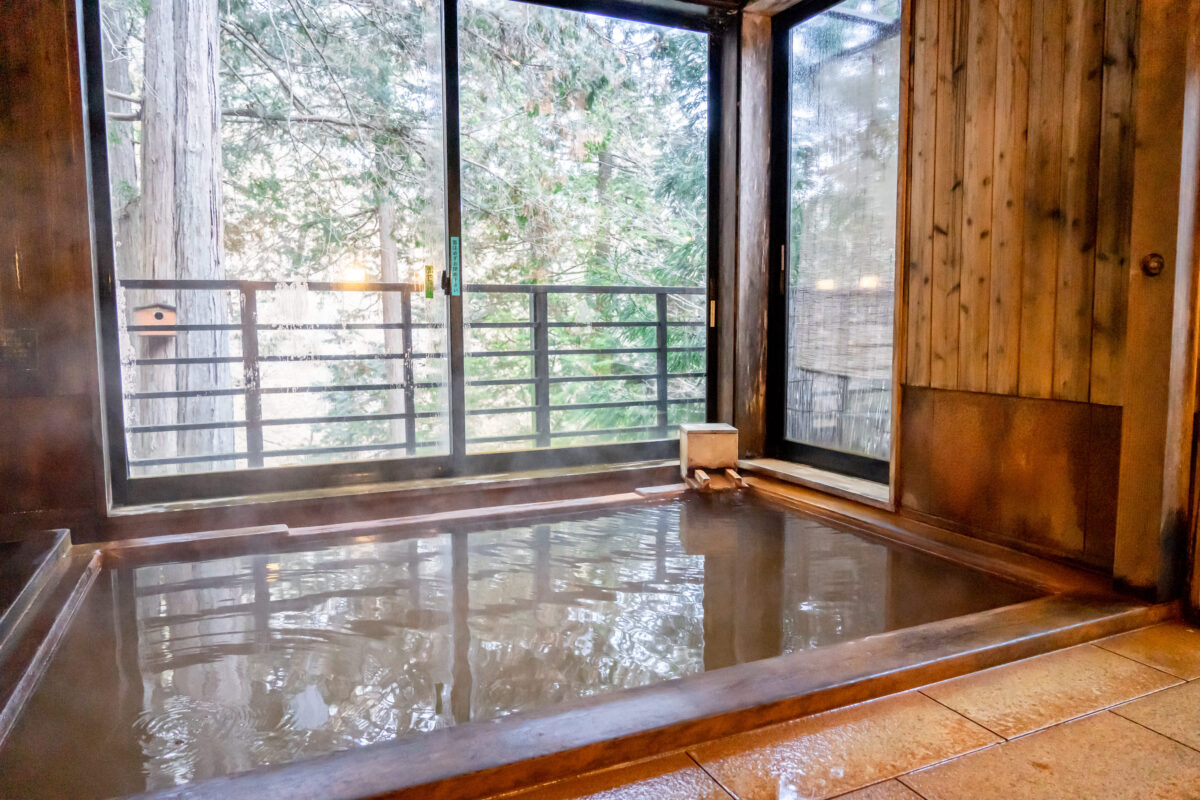
Kami no Yu is surrounded by trees in a serene location and is only a 5-minute drive from Harumiya Shrine, making it easily accessible from the town. As this inn is also perfect for resting and healing through its hot springs, visitors can stay consecutive nights here to recuperate from their everyday lives. Day-trip bathing is also available. Perfect for the solo traveler.
Conclusion:
Shimosuwa is a fantastic town where history, culture, food, and hot springs can all be found next to excellent sightseeing spots. Even if you don’t see everything, many enjoy just calmly strolling around and taking in the views. Keep this article handy when you visit Shimosuwa so you can make the most out of your trip!